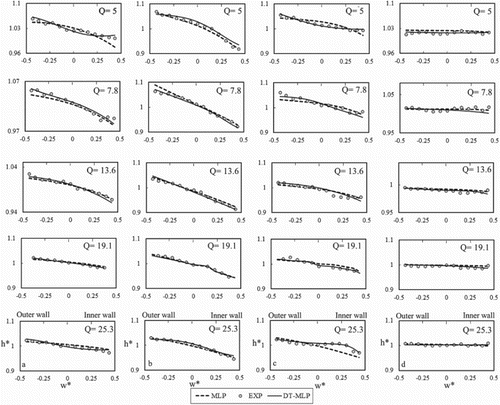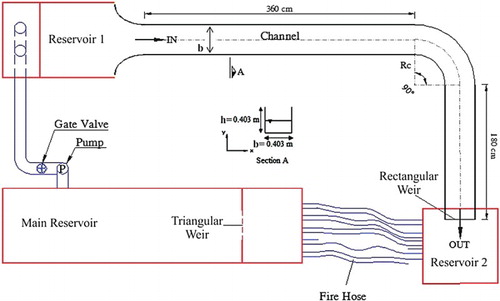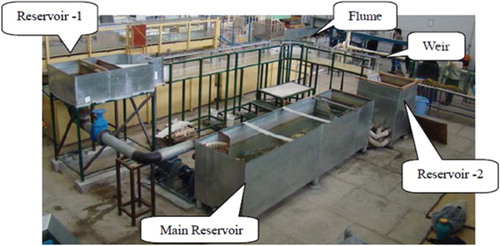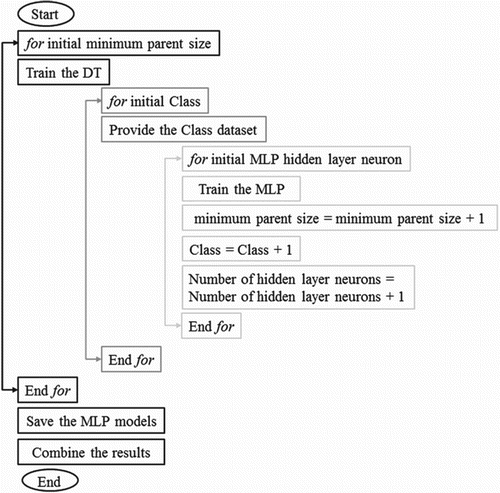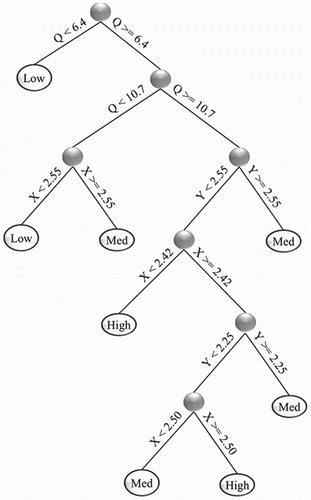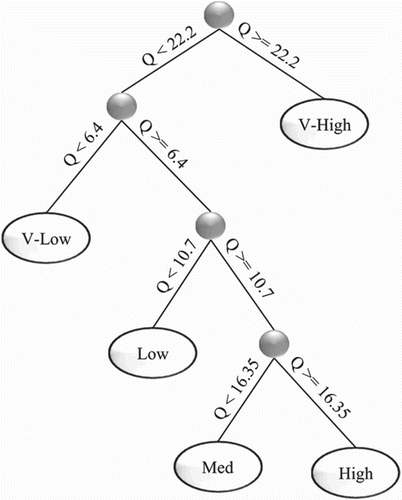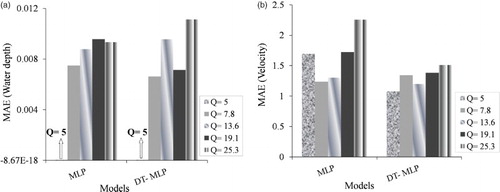Figures & data
Table 1. Different experimental hydraulic properties.
Figure 4. (a) Three-dimensional view of the cross sections, (b) example of the 13 points in a cross section and (c) example of the point coordinates.
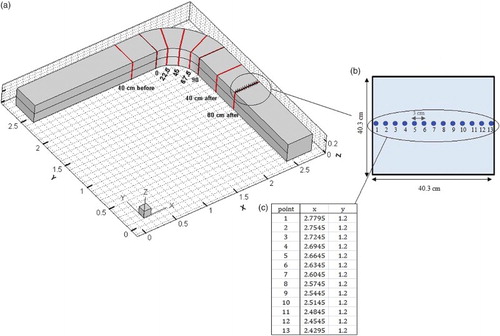
Figure 6. Comparison of the velocity values predicted by the MLP and DT-MLP models with the experimental values for the training dataset.
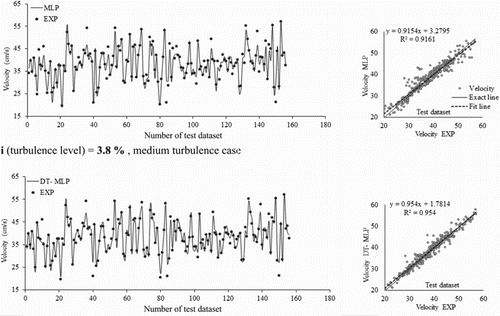
Figure 8. Scatter plot of experimental values with the MLP and DT-MLP models for the test dataset and with separate results relating to each discharge rate for one run.
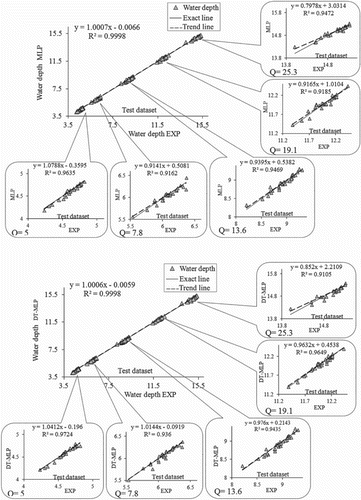
Figure 9. Transverse distribution of depth-averaged velocity for the MLP and DT-MLP models compared with the experimental values at different discharge rates.
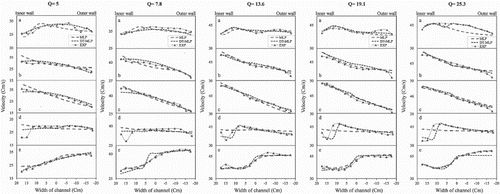
Table 2. MAE error values of the velocity transverse profile for the MLP and DT-MLP models at different discharge rates and cross sections.
Figure 10. The transverse profile of water surface predicted by the MLP and DT-MLP models compared with the experimental results at different discharge rates at cross sections of (a) 0°, (b) 45°, (c) 90° and (d) 40 cm after the bend.
